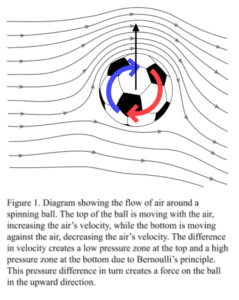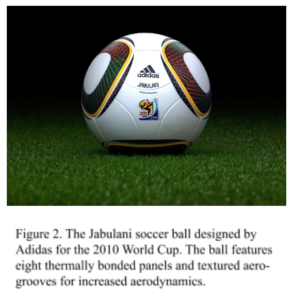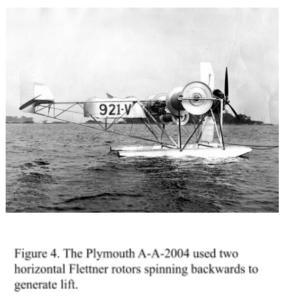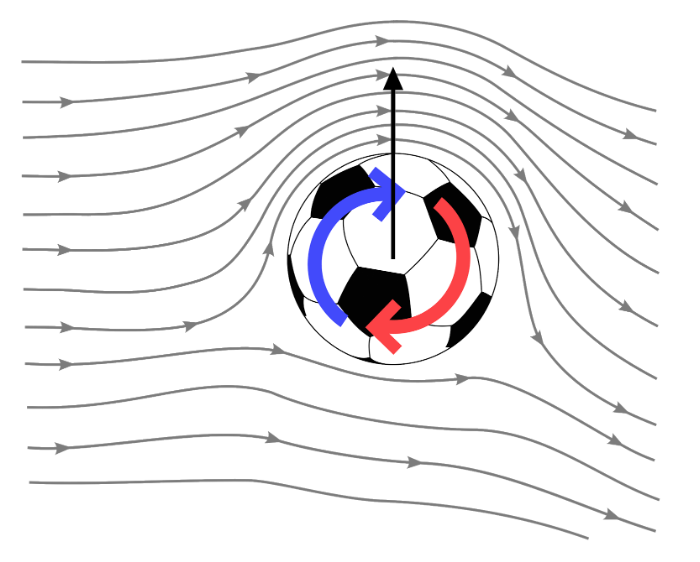Introduction
Throughout our daily lives, there are elements of design and engineering all around us, most of which go completely unnoticed. Whether it’s the chair you’re sitting on, your favorite pen, or the individual bricks in a building, they all needed to be engineered and designed to function. However, just because something goes unnoticed doesn’t mean it isn’t important. In fact, some of the most important systems around us – our sewage system, the roads, or the power in your house – go unnoticed until something goes wrong. They are engineered to be unnoticed, and it’s good practice to recognize that fact every once in a while. This doesn’t just apply to infrastructure. Good engineering can be found everywhere, from your morning commute to your favorite football team. When you start paying attention to this kind of engineering, you may wonder why something is designed in a particular way. When that happens, you’ll learn more about the world we live in, and we can start by looking into one of the most popular aspects of our society: sports.
Magnus Effect in Sports
If you’ve ever seen a soccer player bend a shot around a wall of players or a baseball pitcher throw a curveball, then you’ve seen the Magnus effect at work. The Magnus effect is responsible for the curve of a ball spinning through the air, and while the general audience of a baseball or soccer game may not be aware of the effect, engineers have to take it into careful consideration when thinking about the design of any particular ball. The material, texture, and shape of any seams on a ball affect how the ball performs in flight. While the Magnus effect may be most prevalent in sports, it also has broader applications if you’re willing to be creative. But what exactly causes the Magnus effect?
When a spinning ball or cylinder is flying through the air, one side is traveling in the direction of airflow, while the other side is traveling against it [1]. Figure 1 shows a diagram of the airflow around a spinning soccer ball. The side of the ball moving with the air is able to pull that air using friction along its surface, deflecting the path of the air behind the ball. The other side slows the air down and won’t drag the air around as much. From the perspective of figure 1, this imparts a downward force on the air. A quick review of Newton’s third law of motion tells us every action has an equal and opposite reaction. Applying this now to our flying ball means that this downward force on the air results in an upward force on the ball. You can also think of the effect as a specific application of Bernoulli’s principle.
Bernoulli’s principle states that an increase in the speed of air corresponds to a decrease in pressure of that air [2]. Again, applying this to our case, the side of the ball moving with the flow of air increases the speed of the air on that side. Inversely, the side moving against the airflow will decrease the speed of that air. The faster moving air, according to Bernoulli’s principle, will have a lower pressure, and the slower moving air will have a higher pressure. This difference in pressure causes a force that moves the ball towards the area of lower pressure. In the case of figure 1, that means that the ball will move in the upward direction.

Players of many different sports are able to employ this effect to help their game. In soccer, players can use the spin of the ball to maneuver around players during a free kick, or even score a goal directly from a corner kick [3]. In golf, a slice or hook is almost completely caused by a sideways rotation of the golf ball. Additionally, driving a ball with backspin adds Magnus lift to the ball, causing it to stay in the air longer [4]. In fact, the dimples on a golf ball are put there in order to increase this Magnus force. The dimples actually create more drag on the ball, but simultaneously increase the amount of Magnus lift the ball can have, giving it an overall positive change. Tennis players can also use the effect to curve their shots. Isaac Newton actually described the Magnus effect in 1672 while watching tennis players at the University of Cambridge [5], but the force was first studied formally by German physicist Heinrich Gustav Magnus in 1852 [1]. Table tennis players are similarly able to curve their shots, owing to the grip of the rubber material on most paddles. Baseball pitchers are incredibly reliant on the Magnus force for their pitches. Curveballs and sliders all work due to the Magnus effect [6].
Needless to say, the Magnus effect is important in pretty much any sport where a spinning ball flies through the air. The design of the ball, however, is what dictates how important the effect is in any given sport. In baseball, the placement and number of stitches greatly affects the aerodynamics of the ball. In general, the more friction the ball creates with the air, the larger the Magnus effect will be. While the actual design of baseball stitches has remained relatively unchanged for many years, even the quality of the stitches will have an effect on how the ball flies [7]. Good pitchers are able to feel the ball and judge how much it will curve while in the air. This in turn affects how much spin they give to the ball and how fast they throw it.
Soccer is a good example of how engineers can tailor the design of the ball to produce more or less curve. The traditional black and white soccer ball has a total of 32 patches all sewn together. The seams between these patches are what determine the amount of Magnus force a ball will produce in air [8]. Unlike in baseball, the design of modern soccer balls changes all the time. The design of the World Cup ball, for example, changes frequently, and engineers have to be able to alter or find new designs to mitigate problems from the past.

The Jabulani soccer ball, designed by Adidas for the 2010 FIFA World Cup, is a good example of this. This ball was designed with collaboration from academic researchers from Loughborough University in the UK to be as aerodynamic as modern science allowed [9]. The ball was eventually made with eight spherically molded panels that were thermally bonded to eliminate any seams. This was a decrease from 14 panels in the 2006 World Cup. Molding the panels spherically eliminated microscopic tears that normally occur when flat panels are stretched over a spherical surface, making the surface of the ball smoother. The ball’s surface was textured not dissimilar to the surface of a golf ball, and ‘aero-grooves’ were engineered to further increase the aerodynamics of the ball. The end result was a ball that many of the world’s top players actually hated. The problem was that the ball was too aerodynamic, and players weren’t able to predict the trajectory of the ball like they could in training. A common technique in professional soccer is the ability to curve the ball by imparting spin on the ball. By making the ball more aerodynamic, spinning was not able to curve the ball as much, which made it difficult to predict its flight path [10]. The ball quickly became infamous as many players spoke out against it. The engineers, scientists, and designers had to take that criticism into account when designing the next iteration. This is just one example of the engineering that goes into the design of sports balls, but it isn’t the only one. This design process happens at some level for every sport.
Even the design of a ping pong ball will affect how it plays. In particular, the finish of the surface is very important in ping pong [11]. A curvier ping pong ball will have a more matte finish. Even the molding seam on the ping pong ball will have an effect on play. Due to the fact that there is only one seam on a ping pong ball, and because this seam only goes around the ball in one direction, the Magnus effect on them can be unpredictable. The strength of the force will change whether the ball is spinning with the seam or perpendicular to the seam. The seam is usually unwanted because of this unpredictability, and higher quality balls will make more of an effort to eliminate this seam.
Other Applications

While they are the most prevalent, sports balls aren’t the only things that use the Magnus effect. In the early 20th century, engineers used large vertical cylinders called Flettner rotors on boats to propel them forward. Figure 2 shows the Buckau, one of the earliest designs utilizing Flettner rotors. The large rotors spin and capture crosswinds to propel the ship forward [12]. Flettner rotors weren’t nearly as efficient as steam engines however, so they fell out of use. They weren’t completely forgotten though; today a cargo ship called E-Ship 1 utilizes four Flettner rotors in order to increase its fuel efficiency and decrease its dependence on diesel engines.
Another creative use of the Magnus effect is in airplanes. In the early days before flight was mastered, the Plymouth A-A-2004 airplane was made using two horizontal Flettner rotors instead of wings [13]. The rotors were spun backwards to generate more lift than a traditional wing shape is able to. The plane was built in 1930 and made several successful flights before it eventually crashed. The problem was that while the Flettner rotors generated more lift than wings, they also produced a lot more drag, which meant that they weren’t as fast or efficient. There probably won’t be a major airliner that uses Flettner rotors anytime soon. That being said, they can be used in remote-controlled planes as a fun and creative alternative to wings.

Conclusion
The Magnus effect shows up all over the place, and if you’re able to recognize it, then you may be able to take advantage of it. Whether you’re looking to improve your baseball pitch, your ping pong game, or even just looking for a fun hobby project, understanding the Magnus effect will give you some ideas of where to start. And even if you aren’t looking to make or improve anything, being able to recognize the Magnus effect in everyday life will give you an appreciation for the engineering and design that usually goes unnoticed.
Works Cited
[1] Magnus, G. “Ueber die Abweichung der Geschosse, und: Ueber eine auffallende Erscheinung bei rotirenden Körpern.” Annalen der Physik und Chemie, 164 (1853): 1-29.
[2] L. Clancy, “Bernoulli’s Theorem,” in Aerodynamics, New York: Wiley, 1978, ch. 3, pp. 16-32.
[3] N. Hall. (2015, May 5). Aerodynamics of Soccer [Online]. Available: www.grc.nasa.gov/www/k-12/airplane/soccer.html
[4] Davies, J. “The Aerodynamics of Golf Balls.” Journal of Applied Physics, 20, no. 9 (1949): 821-828.
[5] Newton, I. “A Letter of Mr. Isaac Newton, Professor of the Mathematicks in the University of Cambridge; Containing His New Theory about Light and Colors: Sent by the Author to the Publisher from Cambridge, Febr. 6. 1671/72; In Order to be Communicated to the R. Society.” Philosophical Transactions of the Royal Society of London, 6, no. 69-80 (1671): 3075-3087.
[6] Briggs, L. “Effect of Spin and Speed on the Lateral Deflection (Curve) of a Baseball; and the Magnus Effect for Smooth Spheres.” American Journal of Physics, 27, no. 8 (1959): 589-596.
[7] Alam, F. et al. “A study of baseball and softball aerodynamics.” Procedia Engineering, 34 (2012): 86-91.
[8] Hong, S. and Asai, T. “Effect of panel shape of soccer ball on its flight characteristics.” Scientific Reports, 4 (2014).
[9] J. Wing, “Adidas “JABULANI” Official Match Ball of the 2010 FIFA World Cup™”, Loughborough University, 2009. [Online]. Available: https://www.lboro.ac.uk/service/publicity/news-releases/2009/169_adidas-jabulani.html.
[10] P. Martinez, “The Naughty Jabulani”, Illumin, no. 1, 2011.
[11] R. Storm (2014, June 12). Ping Pong Curve [Online]. Available: www.grc.nasa.gov/www/k-12/TRC/Aeronautics/Ping_Pong_Curve.html
[12] Barnes, G. “A Flettner Rotor Ship Demonstration.” American Journal of Physics, 55, no. 11 (1987): 1040-1041.
[13] Berend van der Wall, Göttinger Monograph N : German research and development on rotary-wing aircraft (1939-1945), Reston, VA: American Institute of Aeronautics and Astronautics, Inc., 2015.



